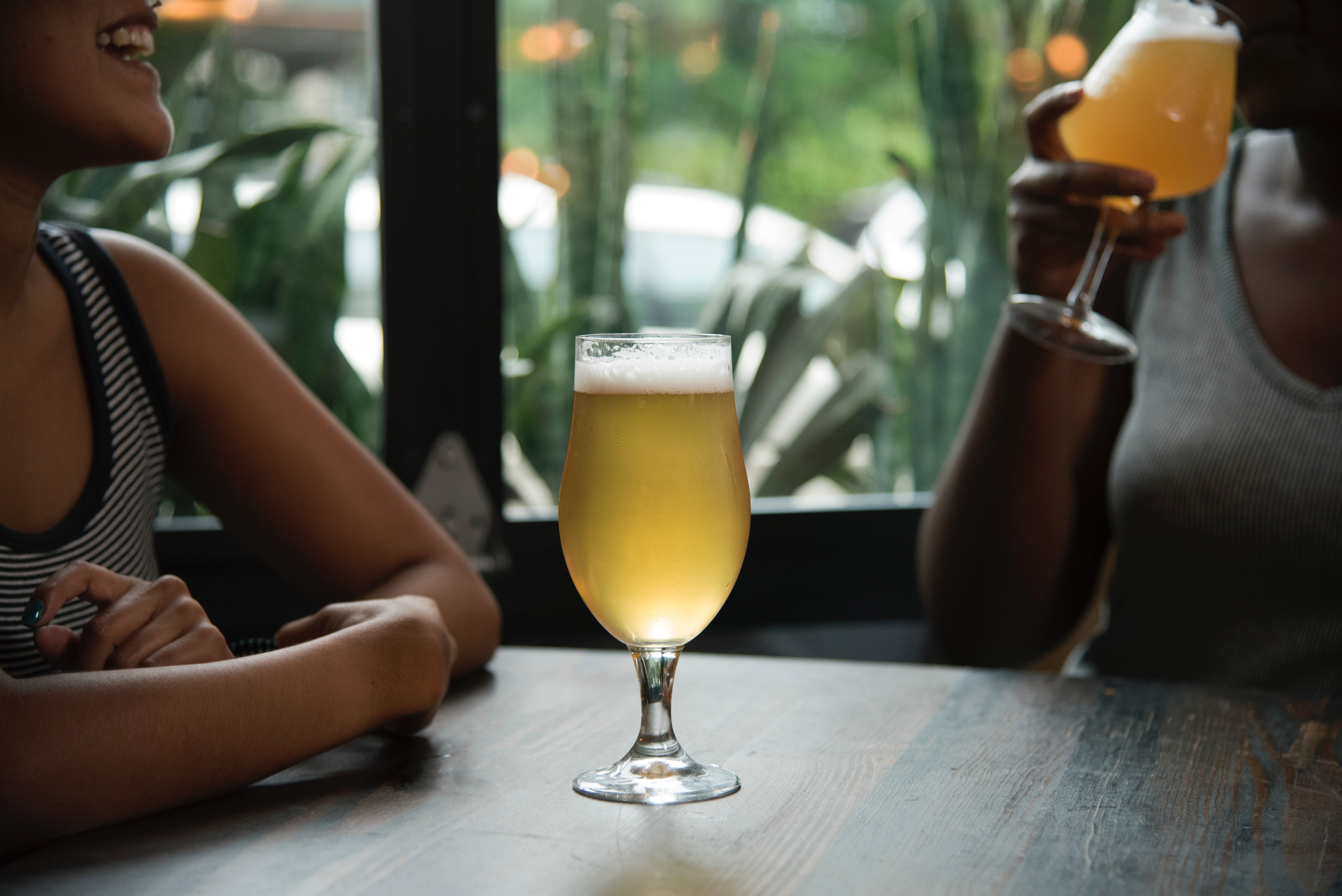A Unique 20th Century Archive of Life as an Amateur Photographer in Worcester, MA
This October, the Worcester Art Museum
, in collaboration with Clark University, opens a new exhibition of stunning portraits of people of African-American and Native American descent. Rediscovering an American Community of Color: The Photographs of William Bullard provides a unique window into an American community of color following Reconstruction into World War I, a period of African American U.S. history that is often overlooked. It is the first exhibition drawn from an archive of over 5,400 glass negatives left behind by Bullard, a white photographer active in Worcester and across central Massachusetts between 1897 and 1917. Taken primarily in Worcester’s Beaver Brook neighborhood, these images offer a unique look at a community made up of recent Southern migrants, people of Native American descent, Black Yankee families, and a handful of immigrants from the Caribbean. Unusual for the period, Bullard left behind a logbook identifying the names and places of nearly 1,000 of his photographs, including over 80 percent of his portraits of people of color. This makes the collection especially rare, as it is possible to tell the personal stories of many of Bullard’s sitters.
Rediscovering an American Community of Color: The Photographs of William Bullard opens on October 14, 2017 and runs through February 25, 2018. Co-curated by Nancy Kathryn Burns, the Museum’s Associate Curator of Prints, Drawings, and Photographs, and Janette Thomas Greenwood, Professor of History at Clark University, the project brought together scholars, students, descendants of Bullard portrait sitters, and community members. Working with Frank Morrill, owner of the Bullard collection of negatives, Greenwood connected with many living descendants, collecting valuable oral histories. Clark University students, who helped research the photographs and prepare the exhibition, also met with descendants and gathered family stories that provide context for the photographs. A community advisory board, made up of local descendants and community leaders, also linked researchers with family members.
“While recognizing the beauty and significance of Bullard’s works to the history of photography, this exhibition—and the related research and oral histories—also demonstrate how valuable such works can be to understanding our community in the present,” said Jon Seydl, senior director of collections and programs. “This collaborative project exemplifies perfectly the Worcester Art Museum’s mission to connect people, communities, and cultures through the experience of art.”
In the two decades before the Civil War, as the abolitionist movement gained strength, Worcester earned a reputation as a welcoming city, a place that offered jobs and opportunity, as well as a community of people sympathetic to the anti-slavery cause. As a result, Worcester continued to draw migrants during and after the Civil War, especially among African-Americans from the South who were looking for new opportunities in the North. However, like many northern communities that saw an influx of outsiders, Worcester had become a far less welcoming place by the time Bullard took his photos, with an informal color bar in local industry that kept most people of color in service occupations. Despite discrimination and few resources, people of color built a strong and lively community, which is captured in Bullard’s portraits. Contemporaneous with the “New Negro” movement—which sought to reframe the post-Civil War and post-slavery identity of African-Americans by constructing a new, progressive, and cultured public identity—Bullard’s images depict confident and well-dressed citizens, and with many of the same fashionable accessories—like bicycles and riding attire—consistent with representations of white Americans of the same period.
For example, thirty-six of Bullard’s negatives capture members of the Perkins family, the largest single family represented among his photographs. Edward and Celia Perkins and their children and other family members acquired land in their native South Carolina after the Civil War but, in the economic decline that followed Reconstruction, they were forced to sell their land. The Perkins’s made the decision to move to Worcester, joining Celia’s sister, Mary Stroyer, who was already established there, and eventually brothers and sisters, nieces and nephews followed. The images captured by Bullard celebrate their reconstituted family safely in Worcester.
“William Bullard’s photographs show everyday people in their own settings, in their front yards, back yards, and parlors, capturing an important moment in their history and ours,” recounted Nancy Kathryn Burns. “While posed, many of his sitters demonstrate agency in the way they chose to engage with the camera. The fact that Bullard was a neighbor to so many of the people photographed, likely informs the more relaxed demeanor of several sitters, despite the fact that he was white. As much as they tell us about the subjects, they also speak to the popularization of photography among people of color at the turn of the century. Bullard’s work is an important connecting thread in the history of early twentieth century American vernacular photography.”
Janette Thomas Greenwood noted that “The stories behind many of William Bullard’s portraits tell a fundamentally American narrative, one in which people decide to leave behind an ‘old world’ and seek new opportunities. His images reveal much about their success in raising families and creating new communities, and in particular how so many families accomplished this in the growing city of Worcester, Massachusetts. Today, Worcester continues to be a small but diverse city, making Bullard’s photographs strikingly relevant and a reminder of how much that diversity adds to the strength of our community.”
Rediscovering an American Community of Color: The Photographs of William Bullard includes 80 prints made from Bullard’s glass negatives: 82 portrait prints. The negatives were printed in 2016 by John Marcy of 21st Editions, South Dennis, Massachusetts, under the supervision of the Worcester Art Museum.
Organized in partnership with Clark University, Rediscovering an American Community of Color is generously supported in part by grants from the Massachusetts Foundation for the Humanitiesand the McMillan-Stewart Foundation
. Additional funds provided by the Worcester Educational Development Foundation will facilitate high school visits to the exhibition from students throughout the city of Worcester.
A website, www.bullardphotos.org, will provide supplemental information for the WAM exhibition, and serve as a permanent virtual display of the Bullard photographs. It also includes an essay, contributed by Clark University students involved with the project, reflecting on their research and interviews with the descendants. One student summed up the experience of conducting the background research and gathering family stories, saying “There was nothing more rewarding than showing my research to Larry and Nick Schuyler, the grandsons of Raymond Schuyler. Listening to Larry and Nick’s family stories at my kitchen table over a cup of coffee reminded me how these narratives are not just in the past, but rather are timeless, living histories.”
About William Bullard and His Glass Plate Negatives
William Bullard was born on October 12, 1876, in Worcester, Massachusetts. He was the second of several sons of Ellen M. (Barrett) Bullard and Charles E. Bullard. After his parents separated in 1894, Bullard moved with his mother and brothers to Worcester’s Beaver Brook neighborhood. It was after this move that Bullard begin experimenting with photography, traveling throughout his neighborhood, and across the city and region, to take photographs of streets, businesses, homes, and individuals—and logging some of his negatives in a ledger book. The majority of his images were taken between 1900 and 1908, and the reduction in volume of his work after 1908 may be partly attributed to his family’s move that year to a farm about 20 miles west of Worcester. Subsequently, he only occasionally returned to Worcester to take photographs, in the Beaver Brook neighborhood or elsewhere, instead focusing on photographs of his immediate family and the surrounding farm area. In April 1918, reportedly ill himself and distraught at his mother’s death several weeks earlier, Bullard committed suicide.
Little is known about how Bullard became a photographer, his training, or how he supported himself and his work. Only a few entries in his logbook record payments for selling prints, either to his sitters or to others. Similarly, while Bullard listed his occupation as “photographer” in the Worcester City Directory from 1901 to 1908, he never established a formal commercial studio space, nor is there a record that he advertised for his services. Similarly, Bullard was not listed in the Directory of Massachusetts Photographers, 1839–1900; in the roster of members of Professional Photographers of America or their Massachusetts affiliate; or on the register of the most prestigious local photography organization, the Worcester Camera Club.
The collection of William Bullard’s glass plate negatives is owned by Frank J. Morrill. After Bullard’s death, the negatives were passed to his brother Charles Bullard. Forty years later, Charles sold them to his postman, Frank Gaudette, who subsequently left them to his grandson, Dennis Lebeau. Both Gaudette and Lebeau had occasionally produced prints of some of Bullard’s Worcester streetscapes for sale locally. Morrill acquired the collection from Lebeau in 2003 and, in 2007, purchased the Bullard logbook and other material, too. An avid local historian, Morrill’s initial interest was also in the period scenes of Worcester, but a chance encounter with a misfiled negative—and an innocent question from his 10 year old granddaughter—led to the realization that the collection held more than just regional landscapes and street scenes. The first image identified from the corresponding logbook was a portrait of Celia Perkins. After additional images were identified, Morrill contacted Greenwood, who had earlier written about the northern migration of former slaves and, in particular, those who established themselves in Worcester.
About the Worcester Art Museum
Founded in 1896, the Worcester Art Museum’s encyclopedic 37,500 piece collection covers 51 centuries of art. Highlights include the Medieval Chapter House, Renaissance Court, and Worcester Hunt Mosaic, as well as the recently integrated John Woodman Higgins Armory Collection of arms and armor. The Museum is internationally known for its collection of European and American art. It was the first in America to acquire paintings by Monet and Gauguin and one of the first to collect photography. As the first U.S. museum to focus on collaborating with local schools, it has been at the forefront of engaging audiences and giving them a meaningful and personal experience.
The Worcester Art Museum, located at 55 Salisbury Street in Worcester, MA, is open Wednesday through Sunday from 10 a.m. to 4 p.m.; and every third Thursday from 10 a.m. to 8 p.m. Admission is $16 for adults, $6 for children 4-17, $14 for seniors 65+, and $14 for college students with ID. (New hours and admission, effective September 1, 2017) Members and children under four are free. Parking is free. For more information, visit worcesterart.org
or contact Julieane Frost at JulieaneFrost@worcesterart.org.





